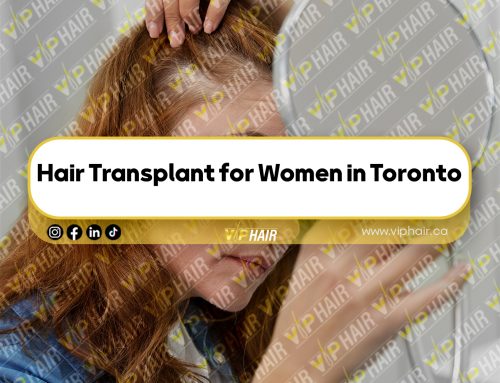For most patients considering a hair transplant, one of the most pressing questions is: “How dense will my hair look afterward?”
In Toronto—a city with one of the most competitive hair restoration markets in Canada—patients walk into clinics with different expectations. Some hope for a full head of teenage-level density. Others simply want enough coverage to stop worrying about bald spots.
But here’s the truth: hair transplants are transformative, yet they are bound by biology. Density depends on your donor hair, scalp condition, hair type, surgical technique, and the artistry of your surgeon. The good news? With realistic expectations and the right Toronto clinic, you can achieve a look that appears naturally full—even if it doesn’t restore 100% of your original density.
This article is your deep dive into hair density after a hair transplant—explained with facts, case studies, Toronto-specific insights, and clear comparisons.
Understanding Hair Density
The Science of Hair Density
Hair density measures the number of follicular units per square centimeter (FU/cm²). A follicular unit can contain 1–4 hairs.
-
Average natural density: 80–100 FU/cm² (≈200–300 hairs).
-
Transplant density goal: 40–50 FU/cm² (≈100–150 hairs).
Why so much lower? Because the human eye can’t distinguish between full density and about half of it. Meaning: even if you only regain 50–60% of your original density, it looks visually full.
Hair Density vs. Hair Caliber
Density isn’t everything. Hair thickness (caliber) matters just as much:
-
Thicker hair shafts provide better coverage, creating the illusion of density.
-
Curly or wavy hair adds layering, hiding more scalp.
-
Fine, straight hair requires higher graft numbers for the same effect.
Example: Two patients in Toronto both get 2,500 grafts. The one with thick, curly Middle Eastern hair appears far denser than the one with fine, straight Northern European hair—even though the graft count is identical.
What’s Realistic After a Hair Transplant?
Toronto patients often ask: “Can I get all my hair back?” The short answer: No. But you can get enough density to look naturally full.
-
Hairline Zone: Usually the highest density (40–50 FU/cm²) for a natural look.
-
Mid-Scalp Zone: Moderate density (35–40 FU/cm²).
-
Crown Zone: Lower density (25–35 FU/cm²) because crowns are harder to cover and need more grafts.
Realistic Result: Around 50–70% of your original density. This level is what most top Toronto clinics aim for—it looks natural to the eye, even if technically less dense than youthful hair.
Factors That Affect Density
1. Donor Hair Availability
Your donor area (usually the back and sides of the head) is the “bank” for grafts.
-
Strong donor supply: Easier to achieve higher density.
-
Weak donor supply: Limits how much can be transplanted.
Overharvesting is a risk. Ethical Toronto surgeons emphasize sustainability: making sure your donor area isn’t depleted for future needs.
2. Hair Characteristics
-
Thick shafts: Cover more scalp.
-
Dark hair on light skin: Scalp shows more, requiring higher density.
-
Curly hair: Creates natural layering.
-
Straight, fine hair: Needs more grafts to appear dense.
3. Surgical Technique
-
FUT (Follicular Unit Transplant/Strip): Can provide more grafts in one session—good for density.
-
FUE (Follicular Unit Extraction): More precise and scar-minimal, but may yield fewer grafts per session.
-
DHI (Direct Hair Implantation): A variation of FUE, sometimes used in Toronto, placing hairs one by one at exact angles for maximum fullness.
4. Surgeon’s Artistry
Even with the same graft count, results differ based on skill. A skilled Toronto surgeon will:
-
Angle hairs naturally.
-
Place grafts densely at the hairline.
-
Spread grafts strategically for maximum visual coverage.
5. Patient Health & Aftercare
-
Smoking, diabetes, or poor nutrition may reduce graft survival.
-
Aftercare compliance (following washing, avoiding scratching, and protecting grafts) ensures higher survival rates.
Toronto-Specific Insights
Toronto is one of the most multicultural cities in the world, and hair type diversity matters for density goals.
-
East Asian patients: Often have straight, coarse hair but fewer follicular units per cm².
-
Middle Eastern & South Asian patients: Thick, wavy hair provides excellent coverage.
-
European descent patients: Fine, straight hair but often high donor density.
-
African descent patients: Curly hair offers excellent visual density, though graft extraction can be more complex.
Toronto surgeons are accustomed to treating this wide variety of hair types, which influences realistic density planning.
FUT vs. FUE for Density in Toronto
FUT (Strip Method)
-
Pros:
-
Can harvest 3,000–5,000 grafts in one session.
-
Best for maximum density in large areas.
-
Cost-effective.
-
-
Cons:
-
Linear scar.
-
Longer healing.
-
FUE (Follicular Unit Extraction)
-
Pros:
-
No linear scar.
-
Faster recovery.
-
Ideal for small to medium cases.
-
-
Cons:
-
Fewer grafts per session (2,000–3,500 typical).
-
May need multiple sessions for high density.
-
In Toronto, younger patients often prefer FUE for scar-free results, while those with advanced baldness sometimes choose FUT to maximize graft yield.
Costs of Achieving Density in Toronto
Hair transplant costs in Toronto are higher than in some countries, but reflect Canadian medical standards.
-
Average per graft: CAD $3–$6
-
Small session (1,500 grafts): $5,000–$9,000
-
Medium session (3,000 grafts): $10,000–$18,000
-
Large session (4,000+ grafts): $15,000–$25,000
Patients aiming for maximum density may need multiple sessions, increasing costs. However, results are permanent, making it a long-term investment.
Case Studies from Toronto
Case 1: Business Professional, 35
-
Procedure: 3,200 FUE grafts.
-
Goal: Restore frontal hairline and top.
-
Result: 45 FU/cm² at hairline, 35 mid-scalp. Looked full and natural.
Case 2: Female Patient, 42
-
Procedure: 2,200 FUT grafts.
-
Goal: Improve thinning at parting line.
-
Result: 50% of original density, creating natural volume without scalp showing.
Case 3: Male, 50, Advanced Baldness
-
Procedure: Two FUT sessions (4,500 grafts total).
-
Goal: Cover front and crown.
-
Result: 40 FU/cm² in front, lighter density in crown. Patient satisfied with natural coverage.
Myths vs. Facts About Hair Density
Myth 1: You can get 100% of your original density back.
Fact: Most patients achieve 50–70% density, which looks full.
Myth 2: All grafts survive.
Fact: Average survival is 90–95%.
Myth 3: Density results are instant.
Fact: Final density takes 12–18 months to appear.
Myth 4: More grafts always equal more density.
Fact: Placement, angle, and hair type matter just as much.
Post-Transplant Care for Density Optimization
Aftercare makes a huge difference in density results.
-
First 10 days: Avoid touching, scratching, or sweating.
-
First 3 months: Follow surgeon’s washing protocol.
-
Medications: Minoxidil or finasteride may help maintain density.
-
PRP therapy: Offered by many Toronto clinics to boost graft survival.
-
Nutrition: High-protein diet with vitamins (biotin, vitamin D, zinc).
Pros and Cons of Pursuing Maximum Density
Pros
-
Thicker appearance
-
Long-lasting confidence boost
-
Natural, youthful look
Cons
-
Higher cost
-
May require multiple sessions
-
Strain on donor supply
-
Longer recovery with large graft numbers
FAQs: Hair Transplants and Density in Toronto
Q1: How many grafts do I need for a dense hairline?
Usually 2,500–3,500 grafts for a strong, natural hairline.
Q2: Can women in Toronto achieve high density?
Yes, but since women usually have diffuse thinning, results aim to increase volume rather than ultra-dense coverage.
Q3: How long until I see my final density?
12–18 months after surgery.
Q4: Can PRP or medications improve density?
Yes. Many Toronto patients combine these with transplants for enhanced results.
Q5: Is FUT or FUE better for maximum density?
FUT yields more grafts, but FUE is scar-minimal. The choice depends on patient goals.
Conclusion: Setting Realistic Density Goals in Toronto
If you’re considering a hair transplant in Toronto, the key is to balance expectations with reality. No procedure can restore teenage-level density, but most patients achieve 50–70% of their original density، enough to look naturally full and confident.
Your outcome depends on donor hair, hair type, surgical method, and surgeon skill. With Toronto’s world-class clinics, patients can expect excellent, realistic results.






Leave A Comment